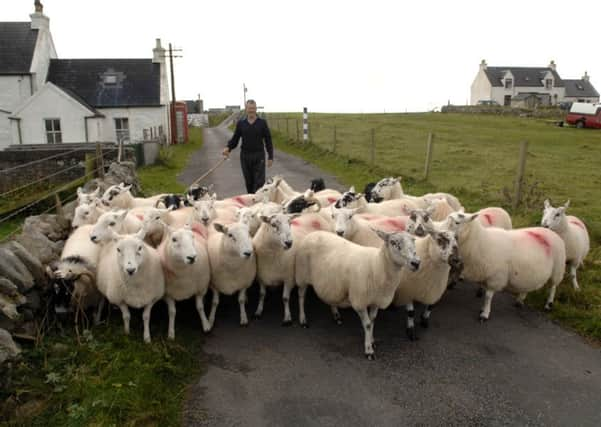Professor Roger Crofts: Time for land to be used responsibly


The First Minister says that the wrong people own Scotland’s land. New legislation has been enacted to change the situation. But the debate on how it is used and managed is being ignored. We need debate on its better use and management.
There are many good examples. The Borders Forest Trust at Carrifran has improved the ecological health of previously overgrazed and undermanaged land. Inter-generational stewardship by the Buccleuchs has resulted in well-managed forestry of native and non-native species, alongside protection of ancient oaks.
Advertisement
Hide AdAdvertisement
Hide AdCommunity ownership through the Abriachan Forest Trust in Lochaber has resulted in improved management and creation of local jobs. The Danish owners of Glenfeshie estate have adopted an ecologically-based approach to retrieving the estate from generations of overgrazing by deer.
Many farmers have forsaken ‘wall-to-wall’ production, have wide field margins to benefit access, ground-nesting birds, and predators on crop pests and to reduce the speed and amount of run-off from fields into water courses. Crofters’ stewardship has resulted in internationally important nature areas.
But there are also many examples of poor stewardship. Hedgerows uprooted in arable areas, ploughing right to the edge of the field and ploughing downhill causing soil and nutrient loss. There are still too many deer and all parties have proved incapable of resolving this long-standing issue. Sporting estates continue illegal persecution of raptors despite the changes in the law in 2012. Timber extraction leaves a devastated landscape.
These examples demonstrate two key points. First, the mentality and objectives of the owners count most, whether they are private, institutional, public, environmental charity or local community owners, irrespective of the length of ownership or nationality. Second, exemplary practices are undertaken largely without any financial incentives or imposition of compulsory codes.
Now is the ideal time for the government to ensure through the proposed Statement of Rights and Responsibilities in the forthcoming Land Reform (Scotland) Bill to place a formal duty on everyone who owns, manages and uses land to do so with nature, landscape and the future in mind.
What do I mean? Surely, we want the land to retain its productive capacity for producing food and wildlife for future generations to benefit from. Surely, we want the damage done over generations to be repaired and restored. Surely, we want the natural process of soil development, water and carbon storage to continue naturally.
To achieve this, all recipients of government money should be required to sign and adhere to codes of good stewardship. The £650 million currently spent on support to farmers can be used to ensure our land is looked after responsibly.
Professor Roger Crofts CBE FRSE is a geographer by training. He worked in the Scottish Office for 17 years and was founder CEO of Scottish Natural Heritage.